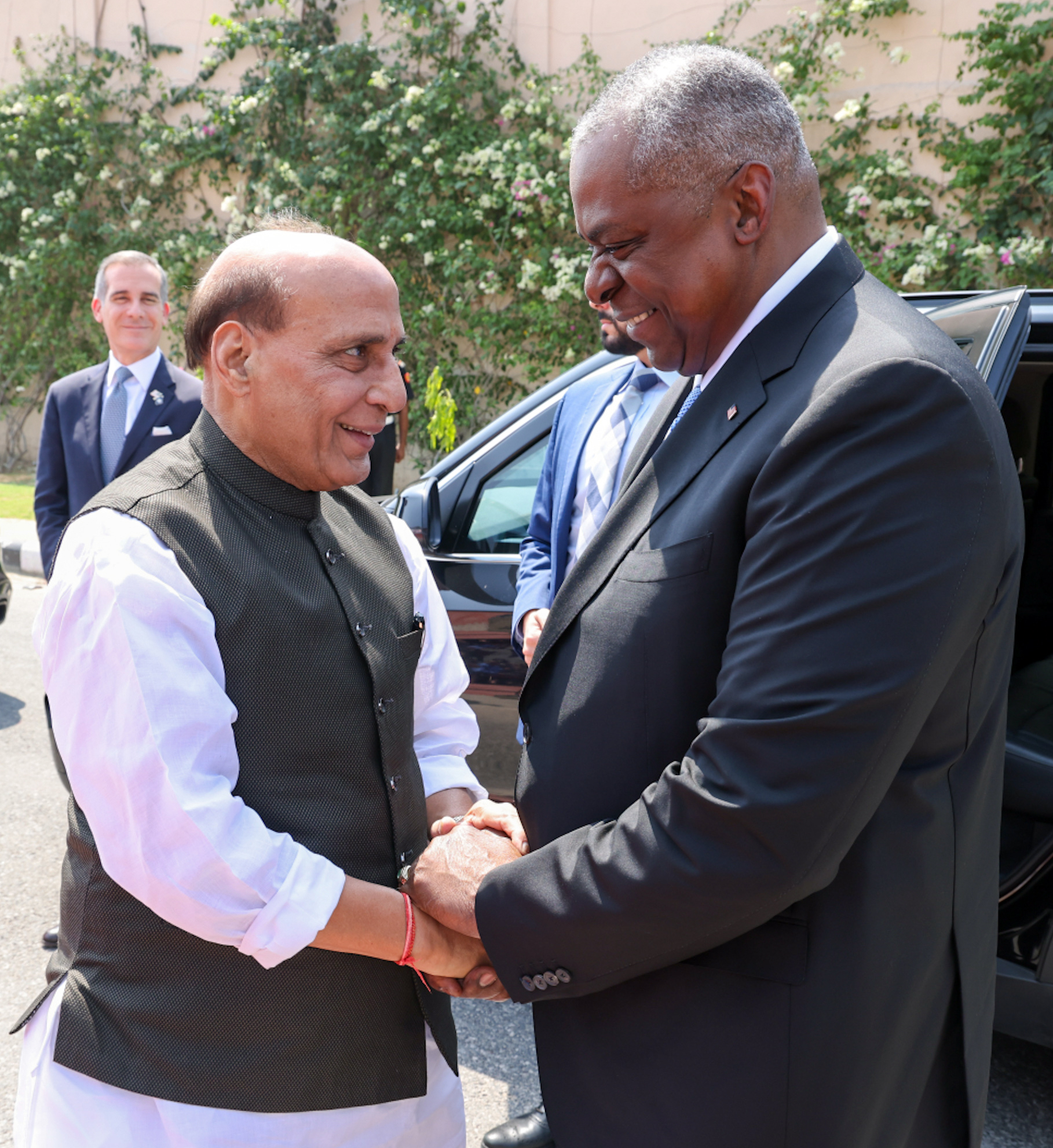
India and the United States have always shared a history of close cooperation in every domain and prominently adhere to the idea of being “shared democracies”. Both the countries have decided to lay out an ambitious roadmap for defence cooperation, which was seen as the major agenda of US Defence Secretary Lloyd Austin’s India visit and meeting with his Indian counterpart Rajnath Singh. Austin, likewise, depicted the India-US global strategic partnership to be the basic of cooperation in the Indo-Pacific region. The US Defence Secretary arrived on a two-day visit that comes ahead of Prime Minister Narendra Modi’s state visit to Washington following his speech at the Shangri-La Dialogue in Singapore on Friday, whereby he said that US’s Initiative on Critical and Emerging Technology (iCET) with India allows US to investigate better approaches to co-foster defence platforms. As a significant move, US President Joe Biden and PM Modi declared in May last year the iCET to improve and extend the strategic technology partnership between the two nations. The discussion additionally looked at approaches to building resilient supply chains for the co-development of new innovations and co-production of existing and new frameworks for defence partnership. The partners additionally discussed regional security issues given their common interest in keeping up with harmony and dependability in the Indo-Pacific region. India is hoping to purchase 18 armed high-altitude long-endurance unmanned aerial vehicles from General Atomics Aeronautical Systems Inc. for an expected $1.5 billion to $2 billion. The UAVs would almost certainly be conveyed along its fretful boundaries with China and Pakistan and in the essential Indian Ocean region. In June 2016, the US assigned India a “Major Defence Partner” status, clearing the way for sharing of basic military gear and technology. US defence ties with India has ascended from null in 2008 to more than $20 billion in 2020. Significant Indian purchases from the US included long-range maritime patrol aircraft, C-130 transport aircraft, missiles and drones.
HISTORY OF
INDO-US DEFENCE COOPERATION IN PAST YEARS
Ties between India and US have been on a rise over the most recent couple of years in the midst of China’s developing assertion in the Indo-Pacific locale and along its borders with India. The two countries have likewise signed key defence agreements and have developed collaboration as a feature of the QUAD security group. The two nations have inked key defence and security arrangements throughout recent years, including the Logistics Exchange Memorandum of Agreement (LEMOA) in 2016 that permits their militaries to use each other’s bases. India and the US, likewise, marked COMCASA (Communications Compatibility and Security Agreement) in 2018 which accommodates interoperability between the two militaries. It was followed by the initiative in October 2020, whereby the two countries signed Basic Exchange and Cooperation Agreement (BECA) which provided an additional boost to defence cooperation. On 23 May, the inaugural US-India Advanced Domains Defence Dialogue (AD3) which was consented to in the last 2+2 Ministerial Dialogue in 2022, pointed towards developing joint effort on “advancing new defence domains with an accentuation on defence space and Artificial Intelligence”.
PM MODI’S UPCOMING U.S. VISIT AND THE EXPECTED OUTCOMES
PM Modi’s visit to Washington is expected to be a crucial one with emphasis on the production of GE-414 turbofan jet engine which will power India’s LCA-Mk2 fighter. In January, the White House said that it had received an application from GE to make engines here in India mutually. The agreement for the production of the GE 414 is currently expected to be declared during PM Modi’s visit. China’s aggressive strategy in the Indo-Pacific area as well as along the LAC are also the key points to look at. PM Modi’s visit is going to be one of a kind whereby the INDUS-X initiative shall also be a key element. It is important to note that China’s Defence Minister, General Li Shangfu, pointed fingers at Austin’s India visit by saying that US is trying to build up a NATO like alliance in the Indo-Pacific region which was clearly defied by the US Defence Secretary. In such a scenario, PM Modi’s visit is certainly expected to bring positive outcomes for shared defence cooperation between the two countries.
Sharanpreet Kaur in an Assistant Professor of International Relations at School of Social Sciences, Guru Nanak Dev University, Amritsar. She writes on issues related to India’s foreign policy, diplomacy, and the politics of South, Central and West Asia.